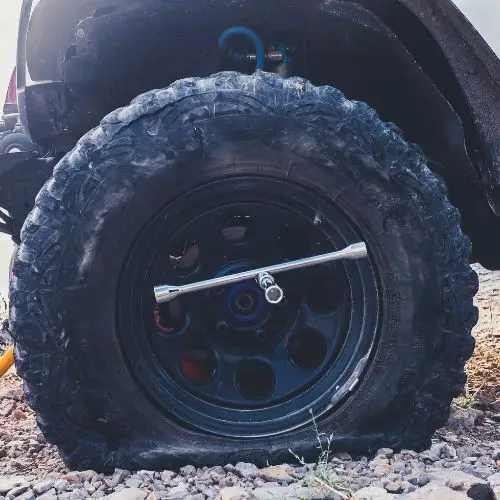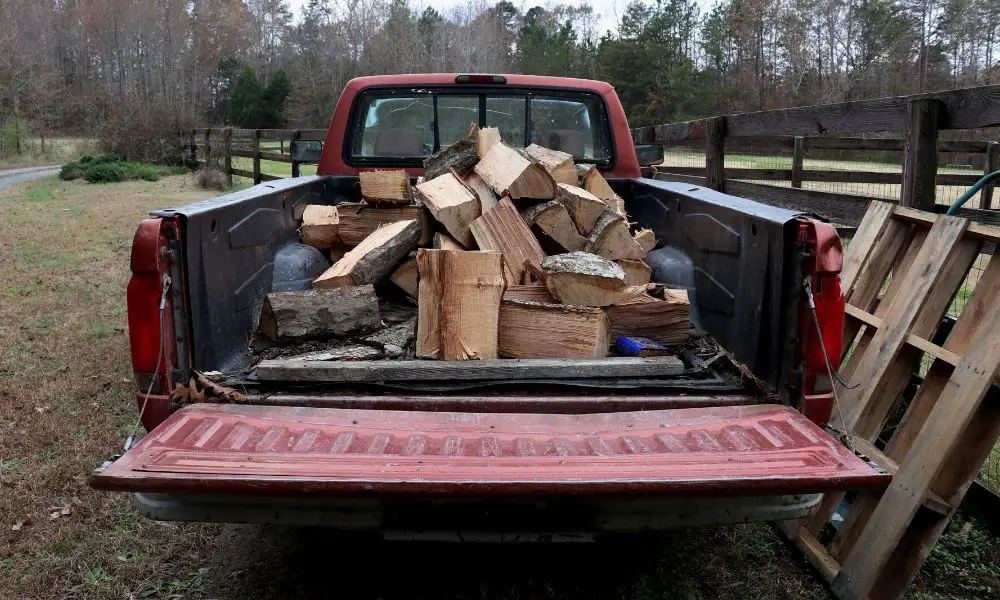We may get commissions for purchases made through links in this post. Thanks for the support! 👍
A flat tire, particularly in the center of nowhere, maybe quite stressful for truck drivers. An air compressor that is portable might come in helpful in these instances. They are lightweight and small, making them simple to transport and store. We recommend considering the following criteria while shopping for a portable air compressor.
Here are some things you should think about when shopping for, and looking to get the right size, and type of compressor!

Size of Tank
The compressed gas is kept in a tank. There are many tank sizes available, ranging from 1 to 60 gallons. More than 60 gallons are available, but only for industrial use. The tank size determines how long the air tools will operate before you have to restart the motor.
Because some equipment, such as grinders and sanders, require a constant supply of compressed air, knowing the tank capacity is critical. In such circumstances, a big tank is required. Also, the number of times you have to turn the engine on and off affects the life of your tools.
Assume you’re using a 1-gallon compressor to fill an inflatable pool. In this case, you must keep the motor running at all times. It will assist you in completing it in a matter of hours. However, if you have a larger tank, say 30 gallons, it will quickly fill the pool. If you choose a stationary compressor, you’ll need to buy a hose reel and keep it in the center of the room for easy access.
Air Pressure Maximum
Any transportable air compressor’s maxed air pressure is critical to understand. It informs you of the types of tires that it can safely inflate. The majority of truck tire transportable air compressors have a max air pressure of 100 pounds per square inch or more.
Length of wire
Even as you might imagine, you’ll need to attach a compressor for air to your truck’s battery or power outlet. Then you’ll need to get it inflated at a tire store. As a result, you’ll need a wire with a length of at least 10 feet to reach all of your truck’s tires and inflate them.
Air compressors, for example, are extremely efficient and are utilized in a variety of sectors. An air compressor is a must-have in every mechanic’s toolkit, whether you’re a do-it-yourselfer or a professional. However, because air compressors come in a variety of sizes, choose the appropriate one might be difficult.
You’ll find all the information you need to pick the correct compressor size down below. Let’s get going, if you’re up for this.
- How do I Fill Up My Tires? A Step-by-Step Guide
- Have 20 year old tires? How old is too old for tires
- Is the penny test for tires accurate?
Air compressor and what will you do with it?

An air compressor is a device that transforms electrical or other forms of energy into potential energy, which is then stored as compressed air. It’s utilized for a variety of things, including filling clean air cylinders, giving clean air to a submerged diver, and inflating tires.
Here are some things to think about while choosing the right air compressor size.
All types of air compressors may usually be plugged into household sockets. Some kinds, however, require additional power or a 240-volt power supply. In certain situations, the air compressor is powered by gasoline, so you don’t have to worry about the outlet.
As a result, double-check the power source you have and the power source required by your compressor. In terms of space, if you have a tiny area, a 6-gallon pancake compressor is also an option. It may be used nearly everywhere. If you choose a 30-gallon compressor, though, you’ll need plenty of room. As a result, you’ll need to make educated choices.
What size will work the best for you is determined on the location where it will be used. If you’re not on the go and conduct your work in your garage, for example, the design won’t matter. However, if you want to move it about, you should go for a lightweight or wheeled compressor. This will help you to select the appropriate air compressor size that suit your needs.
Conclusion
The size of the air compressor you require is determined by a number of variables. Check what you’ll be using it for, such as the application and the tools you’ll be using. Before you start, you’ll need to figure out how much space you have for the compressor. Because compressors occupy a lot of space, this is the case. So, if you keep these fundamental considerations in mind, selecting the appropriate compressor size will be simple.


![18 Ways You Can Make Your Truck More Modern [Best Truck Accessories]](https://amanandhisgear.com/wp-content/uploads/2021/03/Lightbar.jpg)